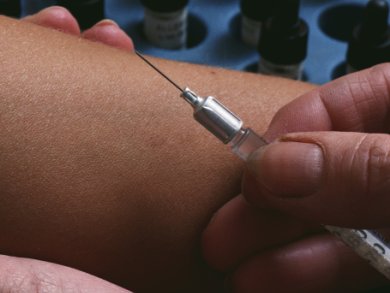Ultra-thin sheets of LEDs implanted under the skin could be used in medical monitoring or in light-activated drug delivery systems
An array of LEDs that is both flexible at 2.5 µm thin and a mere 100 µm square can be printed directly on to a substrate and then transferred to a biocompatible polymer. Such a device, developed by an international team, is now being tested for its potential as a medical implant. The robust and waterproofed device still functions normally even if twisted and stretched and could be used for in vivo spectroscopy-based diagnostics and monitoring or as a light-activator for the controlled release of medicinal products. A spinout company, mc10, will market the device.
Photo: (C) Photodisc/Ghetty Images
- Waterproof AlInGaP optoelectronics on stretchable substrates with applications in biomedicine and robotics
Rak-Hwan Kim, Dae-Hyeong Kim, Jianliang Xiao, Bong Hoon Kim, Sang-IlPark, Bruce Panilaitis, Roozbeh Ghaffari, Jimin Yao, Ming Li, Zhuangjian Liu, Viktor Malyarchuk, Dae Gon Kim, An-Phong Le, Ralph G. Nuzzo, David L. Kaplan, Fiorenzo G. Omenetto, Yonggang Huang, Zhan Kang, John A. Rogers,
Nature Mater. 2010.
DOI:10.1038/nmat2879




